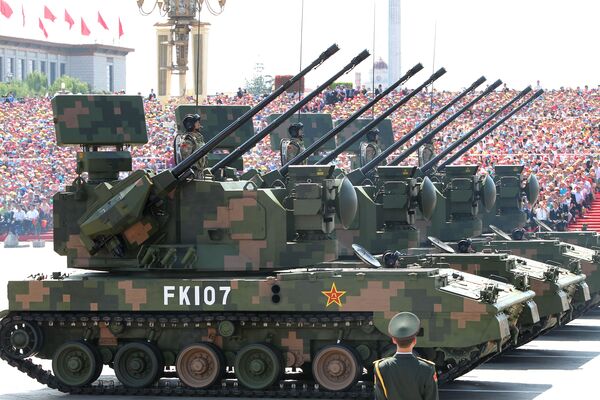
PGZ-09 self-propelled anti-aircraft artillery units on parade in Beijing in 2015. (Photo by Simon Song/South China Morning Post via Getty Images)
A Chinese military exercise to determine the effectiveness of conventional anti-aircraft (AA) forces against an unmanned aircraft system (UAS) swarm has found that a combined gun and missile response was required to destroy even a small-sized swarm.
A UAS swarm, comprising at least 11–12 commercial-type unmanned aerial vehicles (UAVs), was launched at dawn during the exercise, according to imagery aired by state-owned broadcaster China Central Television (CCTV) on 26 and 27 August. A brigade of the People's Liberation Army Ground Force's (PLAGF's) 77th Group Army initially engaged the swarm with two types of self-propelled anti-aircraft artillery (SPAAA) vehicles, according to CCTV.
Janes assessment of the video imagery found that six Type 95 (also known as the PGZ-95) SPAAA vehicles initially engaged the UAVs. Three PGZ-09 (Type 07) 35 mm SPAAAs also comprised the initial PLAGF response to the UAVs.
Although armed with weapon-laying radar and electro-optical (EO) sensors and an effective weapons range of 2–5 km, the SPAAAs could only destroy “40% of the swarm”, according to CCTV.
Weapons used
The PGZ-95 and the PGZ-09 are tracked platforms. The PGZ-95 is equipped with 25 mm Type 87 cannons with a fire-control system comprising an EO suite mounted on the forward part of the turret. The suite includes a television tracking camera with a range of 6,000 m, an infrared tracking camera with a range of 5,000 m, and a laser rangefinder (LRF) with a range of 500–5,500 m. This calculates weapon-laying data.
Looking to read the full article?
Gain unlimited access to Janes news and more...







